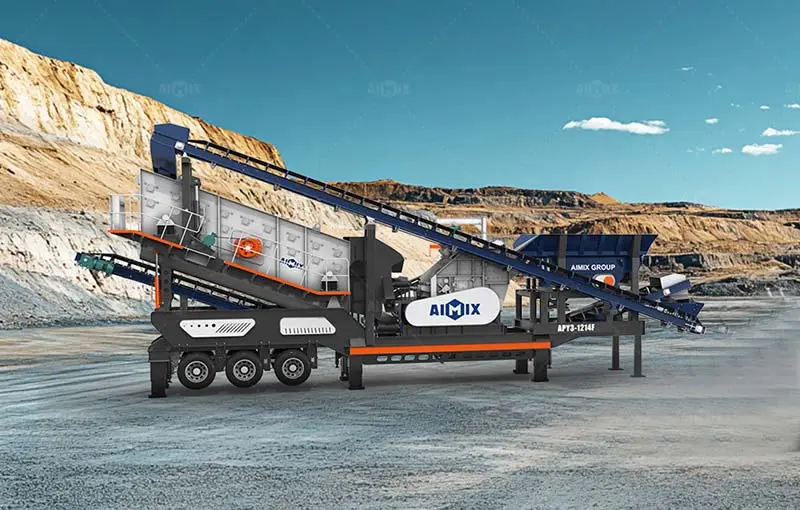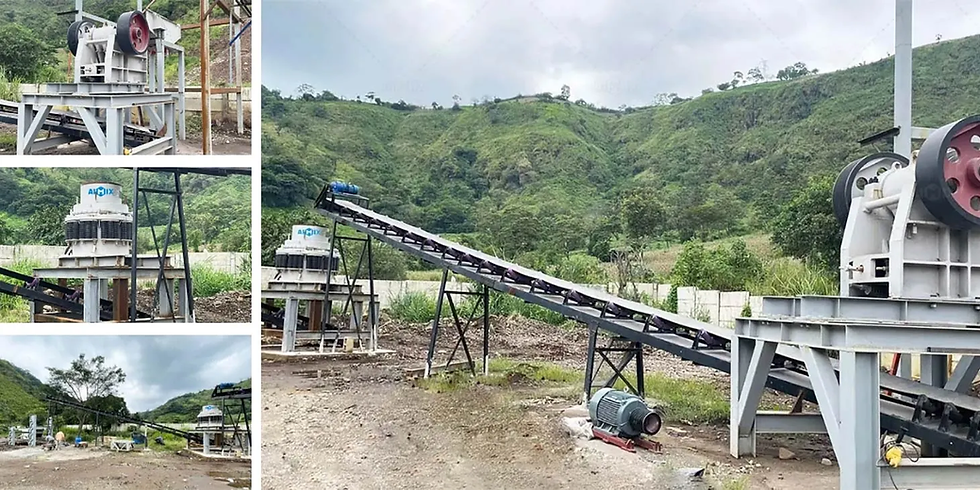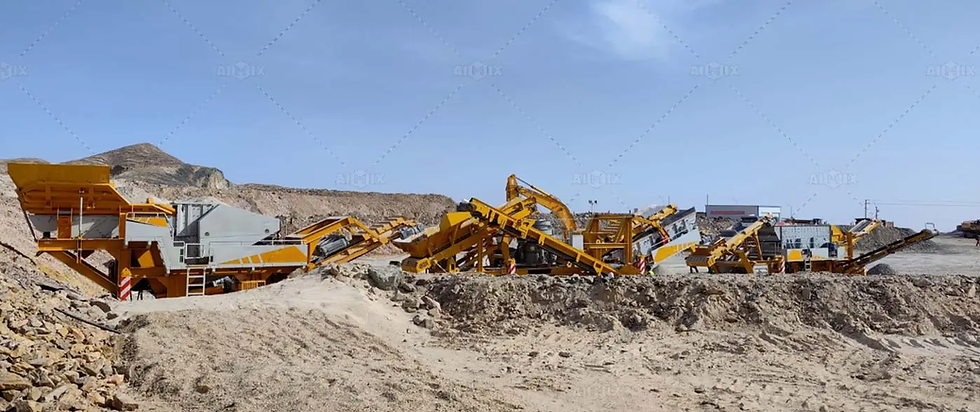How to Match Mobile Stone Crusher Plant Chassis and Models to Your Needs
- aimixgroup china
- Feb 28
- 2 min read
Investing in a mobile stone crusher plant requires a precise evaluation of both chassis configurations and crusher models to ensure the equipment aligns with operational demands. The market offers diverse options, each with specific advantages in mobility, efficiency, and cost-effectiveness. Selecting the right combination is essential for optimizing production, minimizing downtime, and achieving long-term profitability in stone processing and aggregate production.
Understanding Chassis Configurations for Mobile Crushers
The chassis structure directly impacts the plant’s adaptability to different terrains and job site conditions. The two primary options—crawler-mounted and wheeled chassis—serve distinct operational purposes.
Crawler vs. wheeled chassis: Key distinctions lie in their maneuverability and deployment scenarios. Crawler crusher provides superior traction and stability on uneven terrain, making them ideal for remote quarrying sites, mountainous regions, and projects requiring frequent relocation. In contrast, wheeled crushers are cost-effective and faster to deploy, suitable for urban construction, roadwork, and temporary crushing tasks where relocation is less frequent.

Assessing site conditions and mobility considerations is critical in chassis selection. If operations require high flexibility across rugged landscapes, a crawler-mounted system ensures seamless navigation without external transportation assistance. However, for stationary or semi-mobile operations, a wheeled chassis, when paired with proper hauling equipment, offers lower fuel consumption and reduced maintenance costs.
Selecting the Right Crusher Model for Your Application
Crusher models vary significantly based on capacity requirements and material characteristics. Determining throughput needs and feed material hardness is paramount. High-capacity models handle bulk processing efficiently, while smaller units suffice for localized or intermittent crushing operations. Abrasive materials, such as granite and basalt, demand robust wear-resistant components, whereas softer limestone requires less intensive crushing mechanisms.
Understanding primary, secondary, and tertiary crushing options helps in selecting the right unit. A mobile jaw crusher, commonly used in primary crushing, handles large feed sizes with high reduction ratios. For secondary processing, cone crushers excel in precision and particle shape refinement, while mobile impact crusher is preferred for high-speed material processing and superior cubicity in end products. Tertiary crushers further refine aggregates, ensuring consistency for concrete production, asphalt mixes, and roadbase materials.

Balancing Cost with Performance and Longevity
Pricing considerations extend beyond initial acquisition costs. Evaluating the upfront investment vs. operational expenses is vital. While high-end mobile crusher plant command a premium, they often incorporate energy-efficient engines, automated control systems, and advanced dust suppression features, which reduce long-term operating costs. Conversely, budget-friendly models may require higher maintenance frequencies and retrofitting to meet production goals.
Durability, maintenance, and long-term efficiency dictate overall profitability. Selecting a unit with reinforced structural components, easy-access service points, and manufacturer-backed warranties ensures prolonged equipment life. Additionally, choosing a supplier that provides reliable spare parts availability and technical support mitigates downtime risks, further optimizing return on investment.
A well-matched chassis and crusher model not only enhances productivity but also minimizes operational inefficiencies and unnecessary expenditures. Careful selection based on terrain adaptability, material processing needs, and lifecycle costs ensures a sustainable and high-performing mobile crushing solution tailored to specific project demands.



Comments